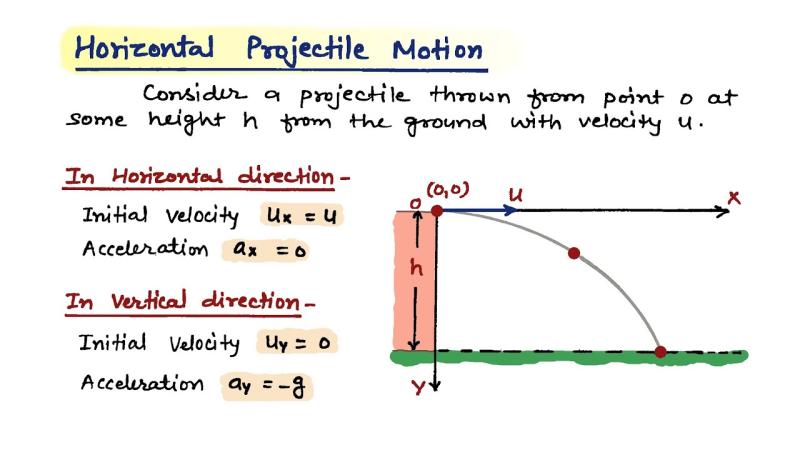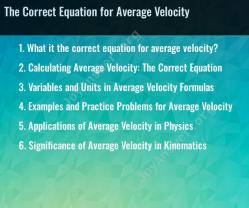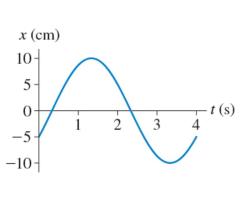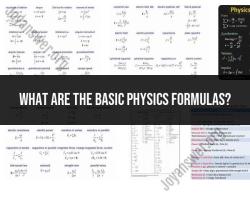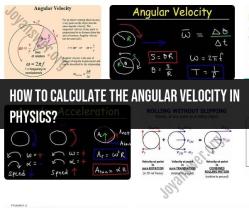What is the physics of projectile?
Projectile motion is a form of motion experienced by an object or particle that is thrown near the Earth's surface and moves along a curved path under the action of gravity only (assuming air resistance is negligible). The physics of projectile motion involves understanding how an object moves in both the horizontal and vertical directions when subject to the force of gravity.
Here are key principles involved in the physics of projectile motion:
Initial Velocity:
- The motion of a projectile begins with an initial velocity. This velocity has two components: horizontal (along the x-axis) and vertical (along the y-axis). The horizontal component remains constant (assuming no external horizontal forces), while the vertical component is influenced by gravity.
Independence of Motions:
- Horizontal and vertical motions are independent of each other. The horizontal motion is uniform and unaffected by gravity, while the vertical motion is uniformly accelerated due to gravity.
Acceleration Due to Gravity:
- In the absence of air resistance, the only force acting on a projectile in the vertical direction is gravity. The acceleration due to gravity () is approximately downward near the Earth's surface.
Trajectory:
- The trajectory of a projectile is the curved path it follows. The shape of the trajectory is influenced by the initial velocity and launch angle. Common trajectories include parabolas.
Range:
- The range of a projectile is the horizontal distance it travels before hitting the ground. The range is determined by factors such as the initial velocity and launch angle. The maximum range is achieved at a launch angle of 45 degrees.
Maximum Height:
- The maximum height reached by a projectile is also influenced by the initial velocity and launch angle. The formula for the maximum height () is given by:Where:
- is the initial velocity,
- is the launch angle,
- is the acceleration due to gravity.
- The maximum height reached by a projectile is also influenced by the initial velocity and launch angle. The formula for the maximum height () is given by:Where:
Time of Flight:
- The time of flight is the total time a projectile is in the air. It is influenced by the initial velocity and launch angle. The formula for time of flight () is given by:
Vertical Velocity:
- The vertical component of velocity changes continuously due to the acceleration of gravity. The formula for vertical velocity () at any time () is given by:
These principles provide a foundation for understanding and predicting the motion of projectiles in various situations. Projectile motion is a classic example of two-dimensional motion in physics and has practical applications in fields such as physics, engineering, ballistics, and sports science.
What is the physics underlying projectile motion?
Projectile motion is the motion of an object thrown or launched into the air, subject to only the acceleration of gravity. The physics underlying projectile motion is based on the following principles:
- Newton's first law of motion: An object at rest will remain at rest, and an object in motion will remain in motion at a constant velocity, unless acted upon by an external force.
- Newton's second law of motion: The acceleration of an object is directly proportional to the net force acting on it and inversely proportional to its mass.
- Newton's third law of motion: For every action, there is an equal and opposite reaction.
In the case of projectile motion, the only external force acting on the object is gravity. Gravity is a downward force that accelerates all objects at a constant rate of 9.81 m/s^2.
How are the principles of physics applied to the study of projectile motion?
The principles of physics are applied to the study of projectile motion to analyze the motion of projectiles and to predict their trajectories. For example, we can use the principles of physics to calculate the following:
- The maximum height reached by a projectile
- The horizontal distance traveled by a projectile
- The time of flight of a projectile
- The angle of launch required to hit a target
To calculate these quantities, we need to know the initial velocity of the projectile and the angle at which it is launched. We can also use the principles of physics to design and build projectiles, such as baseballs, footballs, and rockets.
Are there mathematical formulas or experiments that illustrate projectile physics?
The following mathematical formulas illustrate projectile physics:
- Horizontal distance: *x = v0*cos(θ)t
- Maximum height: h = v0^2*sin^2(θ)/(2g)
- Time of flight: t = 2v0sin(θ)/g
where:
- x is the horizontal distance traveled
- v0 is the initial velocity
- θ is the launch angle
- h is the maximum height reached
- g is the acceleration due to gravity
The following experiment illustrates projectile physics:
- Experiment: Fire a projectile from a launcher at a known angle and velocity. Measure the horizontal distance traveled and the maximum height reached.
- Prediction: The projectile will follow a parabolic path and will reach its maximum height at the halfway point of its flight.
- Results: The projectile will follow a parabolic path and will reach its maximum height at the halfway point of its flight. This confirms the mathematical formulas for projectile motion.
Projectile motion is a fascinating and important topic in physics. It has a wide range of applications in the real world, from sports to engineering. By understanding the principles of projectile motion, we can better understand and design many different technologies and systems.
